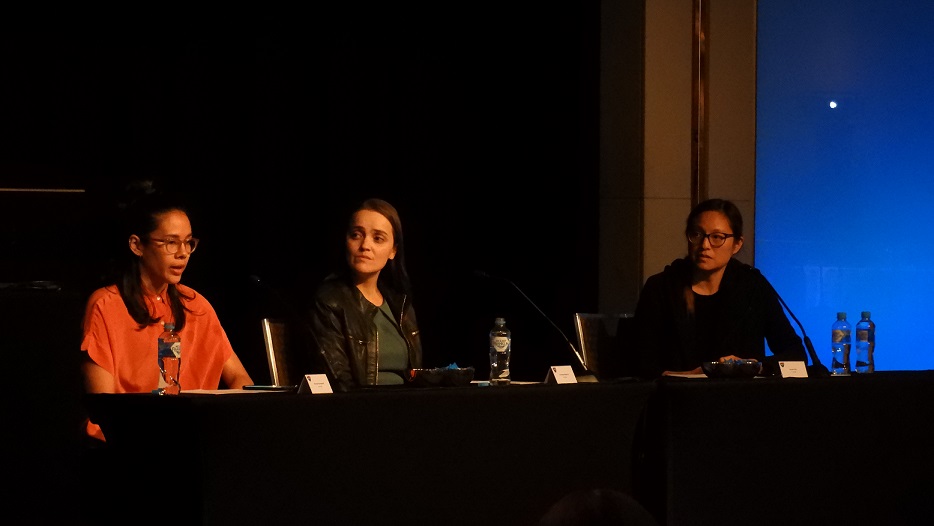With the World Economic Forum forecasting full gender equality to still be another 216 years away, how can the Australian tech industry respond to the challenge of diversity and address its lowly 28% female participation rate.
According to one panel of Australian technology leaders and commentators, the first step is forgetting the idea of gender equality altogether.
“There is no such thing as gender diversity,” said entrepreneur and investor, Susan Wu.
“Gender itself is very non-binary, so when we frame things as gender diversity we are neither treating the full intersectionality of society appropriately.
“Secondly, we not only do harm to those who most need our support in becoming more inclusionary, but we also tokenise women as an under-represented group that needs some special treatment.
“By focusing on the tokenisation of women, we’re basically repeating the harms done in our policies.”
Fellow panelist at the ACS Diversity Panel Event in Melbourne on Tuesday Danya Azzopardi, who is the Senior UX Designer Researcher at Seek, echoed Wu’s sentiments.
“The more we talk about gender diversity the less structural change we see in society,” she said.
“What we actually need to talk about is genuine structural change in society that allows all types of people to be able to participate equally in society.”
The ‘business case’ for diversity has commonly been pitched to companies, who are told they can improve their bottom line by creating more diverse teams.

L to R: Senior UX Designer Researcher at SEEK, Danya Azzopardi; technology reporter with The Australian Financial Review, Yolanda Redrup; and entrepreneur and investor, Susan Wu.
But technology reporter with The Australian Financial Review, Yolanda Redrup warned of the harm of this approach.
“At a high level, most businesses I’ve come across have read the figures that tell them on paper that having more diverse teams leads to better business outcomes,” she said.
“Whether or not that message has really sunk in is a different matter.
“There’s also the issue of businesses achieving gender equality targets but not really understanding why they’re there or why they’re important and not really understanding the importance of diversity of thought.
“It isn’t just about gender, it goes so much further than that. It’s about creating teams that have diverse backgrounds from a socioeconomic level, from a gender level, from a racial level – it’s about bringing together people from all walks of life and I think that’s where you unlock the power.”
As for the World Economic Forum’s figure on gender parity, Redrup explained that creating significant change is a slow process.
“A lot of these initiatives take time to flow through,” she said.
“A lot of the initiatives have been targeted at school programs and getting more kids from a young age interested in STEM and that’s all well and good, but it’s not going to change anything overnight.”
The topic of education is particularly pertinent to Wu who has recently co-founded Luminaria, a new initiative aimed at teaching children better problem-solving skills.
Wu, who was an early investor in Twitter, highlighted the need for education to respond to disruptive technologies.
“One of the reasons why I started a new educational system here in Australia is because I don’t think anyone is doing it that well,” she said.
“As an entrepreneur and start-up person, I have grown up with this idea of thinking if there’s a problem and nobody is solving it you should go and solve it.”
Luminaria now operates its Lumineer Academy out of Melbourne’s Sanridge School.
“It’s basically impossible to predict what the world of the future is going to look like. We know that there are going to be some extremely disruptive structural changes that are going to happen to society largely because of technology disruption.
“The two largest technology disruptions are going to be artificial intelligence and genetic editing.
“So, if I think about what we need to start teaching our kids and what we need to be investing in as a society, there are a couple of things.
“One, we need to start teaching people how to think from a systems perspective rather than a content perspective.
“Content is going to become obsolete. Whatever programming language, whatever tools you learn today are undoubtedly going to expire in the next five or ten years. What’s more important is that you learn how those languages work, how the tools work and how they become useful in different contexts.
“The other one is around resilience and adaptability. If we think about some of the long-term impacts of artificial intelligence and genetic editing and the long-term impacts of climate change and rising income inequality, again it goes back to societal fabric.”




.jpg)





